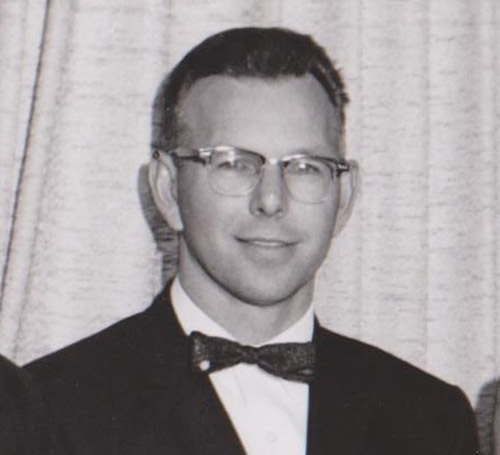Also from “Uplink-downlink: a history of the NASA Deep Space Network, 1957-1997”, Douglas J. Mudgway (page 20).
Richard Mallis was an outgoing individual, easy to work with, sociable, and much respected by his colleagues. He was an excellent manager with good communications and technical skills and an appreciation for the different institutional environments at all three antenna locations.
When he went to JPL in 1955 to work on radio guidance systems for the Army’s Sergeant missile program, native Californian Richard K. Mallis took with him a degree in mechanical engineering from the University of Southern California and a Navy background. Caught up in the changes that swept JPL into the space program in 1958, he assisted with the construction of the first 26-m antenna at Goldstone, and later implemented the down-range tracking station in Puerto Rico to cover the launches of the Army’s two Pioneer lunar probes.
Together with Goldstone, the three stations of the Deep Space Instrumentation Facility finally formed a worldwide network.
With these completed in time to support JPL’s first Ranger lunar missions, Mallis returned to JPL to take up a staff position in Renzetti’s new Communications Engineering and Operations Section. He was responsible for Operations, regulating the way the Network carried out its day-to-day tracking functions. In this role, he set-up a Network-wide logistics and repair program, a frequency and timing standards program, a documentation system, and a training program for operations and maintenance personnel. This essential infrastructure remained the basis for all operations, maintenance, quality control, and configuration management processes as the worldwide Network expanded in size and capability through the years. He integrated the first commercial contractor, Bendix Field Engineering Corporation, into the DSIF as the operations and maintenance service provider for the Goldstone facility.
|
| JPL Operations Manager Richard Mallis, second from the left, joins the three DSN Station Directors in being recognised for his support of the Mariner 2 mission to Venus.
1. William Pickering, JPL Director.
2. Richard Mallis, JPL Operations Manager.
3. Bill Mettyear, DSS 41 Woomera, Station Director.
4. Walt Larkin, Goldstone.
5. Douglas Hogg, DSS 51 Hartebeesthoek, Station Director.
6. Eberhardt Rechtin, JPL Deputy Director.
Scan: Bill Mettyear Jr. |
In later years, as his responsibilities expanded to include the Space Flight Operations Facility at JPL in addition to the DSN, he became Manager of the Operations Division. Eventually he transferred elsewhere in JPL to further his professional career. However, because of his unique experience with service contract management, he was frequently called upon to assist the DSN in evaluating new contract proposals when existing service contracts expired.
He retired in 1993 after 37 years of service at JPL and later took up residence in Australia. |

